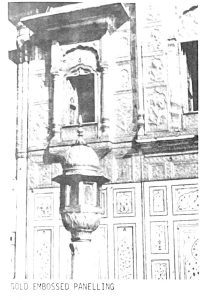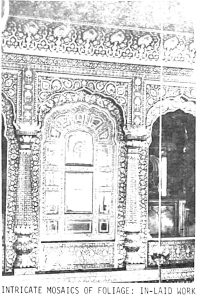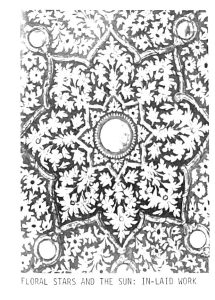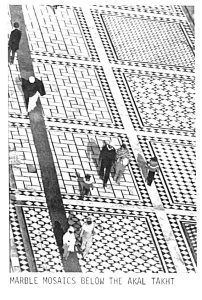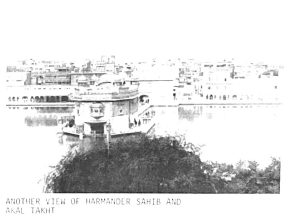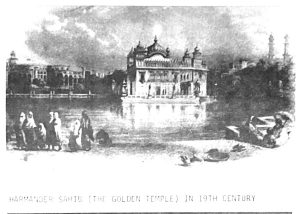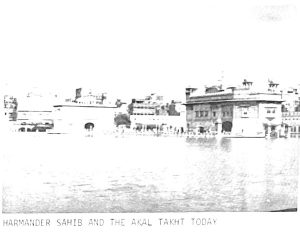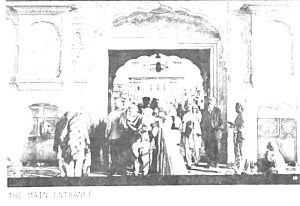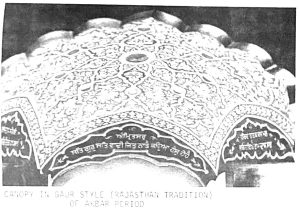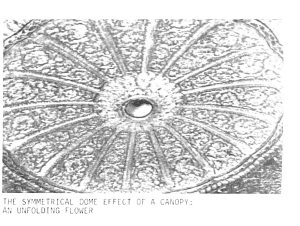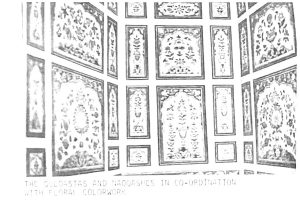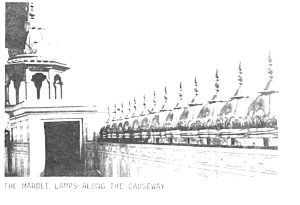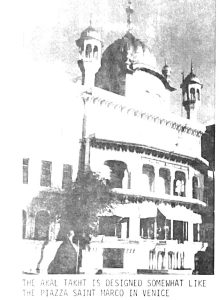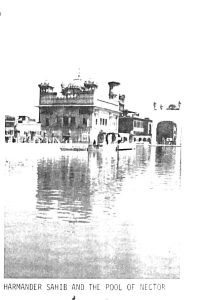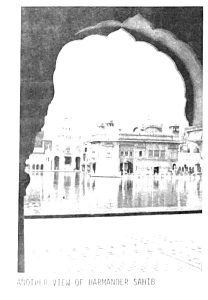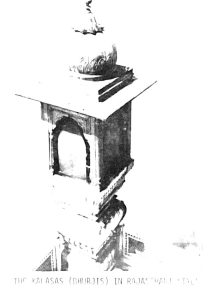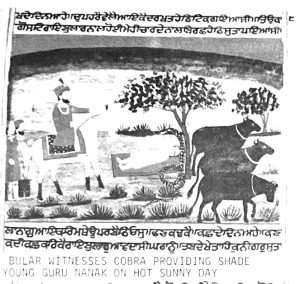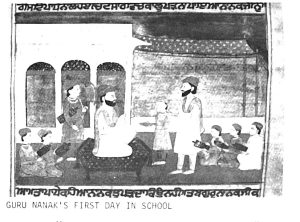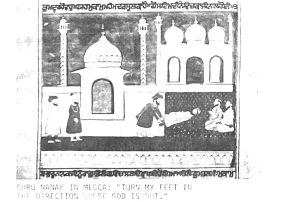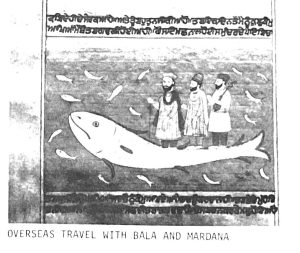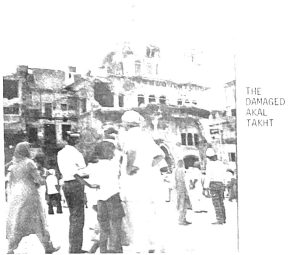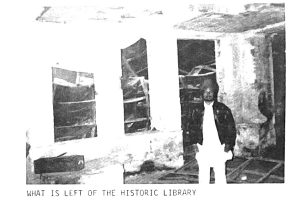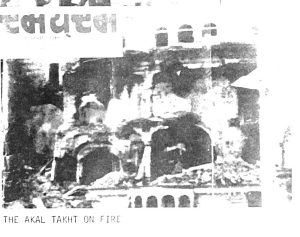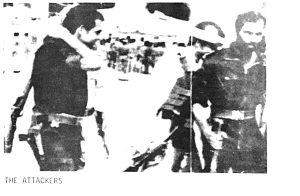judicial or any other enquiry into the carnage, Indian Supreme Court’s former Chief Justice, SK Sikri, Rajeshwar Dayal, India’s former Foreign Secretary, Govind Narain, former State Governor and India’s Home Secretary, BFHB Tyabj, former Commonwealth Secretary and Vice-Chancellor Aligarh University, and TCA Srinivasvardan, India’s former Home Secretary formed a Citizen’s Commission to investigate various aspects of the violence against the minority community and published their findings in a public report 4 Similarly, Professor Rajni Kothari, the well-known social scientist, along with Gobinda Mukhoty assembled a fact-finding team organized jointly by Civil Liberties and Democratic Rights groups and published its findings in a pamphlet form.? Manushi, a woman’s journal, organized independent investigations based on personal accounts of hundreds of widows and orphans, on-site inspections and other evidence. These investigations reveal a gruesome tale of horror, human bestiality and sufferings.
The Military Assault
The military attack comprising mainly of Army, and some Naval, Air Force and para-military troops, on the Golden Temple and 40 other Sikh shrines on June 5 1984, ostensibly “to check and control extremist, terrorist and communal violence,” resulted in heavy damage to the holy shrines Aka/ 7akht in the Golden Temple complex, the holiest Sikh shrine where the Sikh Gurus, the Christ-like divine manifestation for the Sikhs, discoursed and preached three hundred years ago was seriously damaged The nearby historic Sikh library was reduced to ashes and with it many hand written volumes of the Sikh scriptures, some signed by the Sikh Gurus, as well as a large Number of hukamnamas, divine orders. An irreplaceable part of Sikh cultural heritage thereby was irretrievably wiped out 8
There has been a lingering controversy about the Indian Government’s decision to undertake the military assault, nicknamed “Operation Bluestar,” on the Golden Temple. The ostensible reason for the military action was; firstly, to flush out the suspected “terrorists” who had been allegedly using it as a base to kill innocent people; secondly, to apprehend suspected criminals who had taken shelter there; and thirdly, to remove cache of weapons inside the Temple9 Among Hindus, the overwhelming majority community in India, there was a near unanimous relief at the military crackdown. Their sentiment was best summed up by a Hindu businessman in Chandigarh, the state capital of Punjab as: “Those people inside the Golden Temple were murderers and they were out to murder Hindus specially. Thank God that Indiraji had finally the sense to send the army against them.” 10 A scrutiny of the White Paper and some independent and reliable evidence suggests that the reasons for armed entry into scores of Sikh temples were untenable and in all probability were motivated by electoral and political power considerations; have become fountainhead of continuing violence in North India; and have created seemingly unbridgeable cleavage between the two communities not only in Punjab but the rest of india11.
The Government also claimed that the “militants” wanted to break-up India by carving out a Sikh state. It alleged that “foreign powers” were involved in destabilizing India and accused that “CIA had ‘masterminded’ a plan for funneling weapons through Pakistan to the followers of Sant Bhindranwale.”12 The US strongly denied any involvement by the CIA or any other part of the US government in India’s internal affairs.13 Tint to date the Indian Government has not produced any evidence to support the above assertions. The New York Times observed: “If the Bhindranwale group was masking Its intentions, the government has produced no evidence to that effect either before or after the temple raid” 14 According to William Stevens one possible explanation advanced for the Government’s raising of the Khalistan question 1s that it needs to justify the killing in Amritsar and the invasion of the Sikhs holiest shrine “15
In the face of Indian Government’s unsubstantiated claims, The Economist of London summed up the situation. “Few minds will be changed by the Indian government’s white paper on Punjab. Sikhs will not be persuaded that the raid on their Golden Temple was inescapable and nobody will be convinced that the Sikh terrorists had ‘powerful external support.’ Even the tally of captured weapons – fewer than 1,500 guns of all kinds in the entire state of Punjab – does little to bolster the government’s allegations of a massive anti-national conspiracy against the Indian union”16 it is hard to conceive that 1500 weapons, some of pre-First World War vintage, could even remotely be a challenge to world’s fourth largest armed forces composed of a million soldiers, thousands of tanks, aircraft and modern artillery
It is worth noting that the Government of India’s White Paper has been labeled “Operation Whitewash” by India’s respected national magazine India Today for its inaccuracies, distortions and commissions 17” and a similar opinion has been voiced by numerous scholars, journalists and opposition party leaders. Contrary to the Government’s expectations the armed intrusion turned out to be counter-productive and destabilizing as proved by the subsequent events especially those of October-November 1984 and the May 1985 violence in North India a brief scrutiny of Government’s rationale for the military action follows.
Violence Against Hindus
The White Paper reveals that a total of 458 people were kitlea18 as a result of violence during the period March 1981 to June 1984. Out of these 132 were Hindus, 211 Sikhs and 14 others which include unidentified persons of both communities though mainly Sikhs, some Nirankaris (a sect) and a few policemen. While a number of Hindus were indeed killed at the hands of armed Sikh youth, the White Paper figures refute the Government claim that Hindus were being killed indiscriminately in Punjab and were the prime target of terrorism. With rare exception the Sikh deaths have generally been categorized as those of “persons” whereas in the case of Hindu deaths, the name and community have been specified to heighten a particular effect in reader’s mind, 19 Reddy and co-authors have accused the Government of “spreading communal frenzy when it gives the name and religion of one community and how they were injured or killed but ignores the same for the other community.” 20
The killing of innocent people – especially Hindus in this case – was an abominable tragedy, for historically, the Sikhs have invariably protected and given shelter in their homes and temples, to Hindu men women and children as indeed members of other religions. During the 1976 emergency imposed by Indira Gandhi scores of present day Hindu “leaders hid from the law in the Golden Temple complex. The Sikhs gave them free board and lodging and refused to hand those over to the police –21 Further back in history the ninth Guru Tegh Bahadur gave his life for the protection of Hindu religion.22
The White Paper is silent on the acts of State violence. According to Akali Dal, 23 the main Sikh political party in Punjab and Sant Jarnail Singh Bhindranwale, “Inore than 150 persons had been killed in firing or in fake encounters by police and security forces before the military action “24 One of the important demands of the Akali Party and Sant Bhindranwale was that the Government should hold judicial inquiry into all the killings resulting as a consequence of acts of violence and police firing 25 Curiously, until the time of attack on the Golden Temple not a single person had been tried and convicted in a court in relation to the ongoing violence
Violence in Punjab Compared to Other Areas
The figure of 458 killed includes murders committed by criminals and anti-social elements which normally occur in a society anywhere. In Delhi alone, which has the equivalent of one-third the population of Punjab, 244 persons were murdered during 1983 alone 26 The crime rate in UP, an adjoining and much larger state, during the period 1982 to 1984 is shown in Table I. The population of UP is roughly 6 times that of Punjab’s27 whereas the murder figures are 38 times. This crime rate implies that Punjab was 6 times safer than UP for the corresponding period. A similar conclusion can be arrived at in the case of crime in Delhi. Obviously there must have been other considerations besides violence that weighed with the Indian Government for undertaking the military operations.
Table I
Murders in U.P State-1982-1984
Year Murders
1982 5749
1983 5503
1984 6218
Total 17470
Source Indian Express, January 28, 1984, p5.
Presence of “Terrorists and Criminals” Inside the Golden Temple
With regard to the presence of terrorists inside the Golden Temple, a Member of the Indian Parliament, Subramanian Swamy, who five weeks prior to the military attack lived in the Golden Temple for three days wrote: “While I was staying in the Golden Temple I heard nothing but praises sung in Kirtans (hymns set to music) to Rama and Krishna” 28 He said that the terrorists were residing in villages and not in the Golden Temple and prophetically cautioned. “If the government commits the blunder of entering the Golden Temple . . . Punjab will be on fire.”29 He had prefaced his warning with the observation that “the (Punjab) State is India’s backbone. There can be no India without a stable, peaceful and prosperous Punjab. If Punjab disintegrates, then ultimately India will 30 He probably had Punjab’s geo-strategic location, agricultural bounty and martial tradition in mind when making this observation.
Contrary to the Government claims the Golden Temple was not a suitable “sanctuary” for law breakers since it had been surrounded by police and para-military troops from mid-1983 onwards, who searched most of the incoming and outgoing people for arms and explosives. Furthermore, it would be imprudent for a person to commit a crime, say a hundred miles away, and then travel all the distance to seek shelter in the Golden Temple in the light of the watchful presence of the troops around the temple precincts. Here a significant although little-known fact, confirmed by the Indian Home Minister P.C. Sethi, needs to be remembered – that there were many instances in which criminals who had taken shelter inside the Golden Temple were apprehended by the Temple administration and handed over to the police.31 The Sikh tradition has always approved giving shelter to the discriminated, oppressed and persecuted but not to the criminals.
Rightly, the question about the presence of “terrorists and criminals” in the Golden Temple precincts has caused concern to all right-minded people the world over According to Manchester Guardian Weekly, “In the last two years thousands of ‘terrorists and political agitators’ have been shot in Kashmir, Assam and Maharashtra Now it is the turn of Punjab and the Sikhs Indira Gandhi’s justification was that it was a base for Sikh terrorists” The Manchester Guardian goes on to analyses the suitability of the Golden Temple as a base for law breakers 32
“The one requirement for terrorism is secrecy One would not
advertise and plan terrorism from, say, the concourse of Waterloo
Station Similarly, the Golden Temple with its famous four doors to
emphasize its welcome to pilgrims and visitors from the four
corners of the globe irrespective of race, had to say the least,
serious limitations that would, religious considerations apart, have
precluded its use by any group intent on serious terrorism. A secret
telephone number 1s a useful asset for organizing terrorism. The
phones into the Golden Temple were known to, and tapped by police.
Inside, right up to the time of the government attack, pilgrims and
visitors, including the foreign press, were free to go into any part of
the Temple complex. Outside a heavy police presence had existed for
more than a year at each entrance to the Golden Temple”
After the assault, a warlike talkie set had indeed been recovered from the Golden Temple which could have been ideal for directing “terrorist” activities in Punjab 33. However, the set had a limited range of few miles. Furthermore, no matching sets to link up with this gadget were found either after the assault or during the “search and cordon” phase of military operations While the Possibility of the presence of a few law-breakers in the Golden Temple complex cannot be ruled out with certainty because of the sheer size of the daily prayer Congregations, from the foregoing it may be fair to deduce that those inside the Golden Temple were dedicated armed Sikhs who, as the events proved later, chose to defend the holy precincts to the last man against the military intrusion in keeping with the Temple’s longstanding tradition 34 Had they indeed been criminals seeking refuge from the arm of the law – an indication of the timidity of their temperament and character – it is unlikely that they would have resisted the military assault in the manner they did. Criminals and terrorists seldom like to shed their own blood.
Fortifications in the Temple
It is true that as government threats to enter and desecrate the Golden Temple increased over the months, parallel attempts to build up defence to deter such a sacrilegious attack also increased. General Arora had also pointed out that it was only after February 1984 that defence in the Golden Temple complex were prepared.35 According to Manchester Guardian “the ‘fortifying’ of the Golden Temple was nothing but a response to increasing evidence that Mrs Gandhi was determined to solve the ‘Sikh question’ by striking at the very heart of Sikhism.” 36 There are numerous reports that well before the actual attack. Army had practiced assault on mock up models of the Temple complex in Chakrata, UP state.
In a democratic setup it is essential that due process of law is allowed to take its course. The Government failed to issue arrest warrants against the alleged “criminals and offenders” who were suspected to be hiding inside the Golden Temple. This is also true in respect of the Sikh leaders like Langowal, Tohra and Bhindranwale who were inside the Temple at the time of the military assault. This aspect is best explained in the words of Dr S. Swamy, the well-known Indian Member of Parliament, who three weeks before the military assault wrote.37
“The Government keeps saying that criminals were hiding in the
temple area Only once, about a year and a half ago (late 1982), the
government sent a list of 40 criminals to the SGPC (democratically
elected temple administrative body) On examination the SGPC found
that of the 40 listed, 18 could just not be in the Golden Temple. Some
were in Pakistani jails for hijacking, some in Canada and West
Germany by the government’s own admission in Parliament, a couple
of them were dead, and a few others had been released on bail. The
remaining 22 could not be located inside the temple by the SGPC’
screening committee, since the particulars supplied were vague
Later, in the Lok Sabha (Lower House of the Indian Parliament), the
home minister, P.C Sethi admitted these facts Since then, no
further lists have been sent to the SGPC, and yet the government
keeps declaring that criminals are hiding in the Temple complex.”
It was a monumental tragedy that thousands of innocent people were killed in the absence of the “due process of law” on the part of the authorities. The warrants of arrest for even the prominent Persons including Sant Bhindranwale were prepared after the operation Bluestar. In any event, as Swamy after his stay in the Golden Temple observed, “the cases (which were yet to be charge-sheeted) against the two Sants are all political – of sedition against Langowal and of giving inflammatory speeches against Bhindranwale” 38 In fact Prime Minister Rajiv Gandhi publically declared three weeks before the military assault that Sant Jarnail Singh Bhindranwale was a religious man. 39 From the limited legal view point how can government label its citizens as criminals and terrorists without first going through the due procedures Prescribed by law? This process entails first, prefering a charge against a suspected person, second making attempts to arrest him, and third, in the event of evasion of arrest on the Part of that Person, declaring him proclaimed criminal of fender
Arms Inside the Golden Temple
About the presence of weapons inside the Golden Temple there has been a three hundred years old tradition under which an armed guard has always been provided for the protection of the Temple. This tradition emerged as a response to periodic attacks on the Temple by armies from across the Khyber Pass. The British and the post-independent Indian governments honored this tradition and had therefore licensed 28 weapons for the purpose. This fact was confirmed on the floor of the Indian Parliament during question hour on March 7, 1984.40 Indeed there were many times more weapons than the permitted numbers for various reasons – for instance Indian President Zail Singh, in his capacity as the Chief Minister of Punjab and later as India’s Home Minister (Minister responsible for law and order) had issued numerous licenses to people who were in the Temple at the time of military assault. After examining this issue carefully Parliamentarian Swamy said it would be “wrong to say that there cannot, and ought not to be, firearms inside the Golden Temple because the government had permitted” the same there.41
Loss of Innocent Life
Heavy loss of human life resulted from the military assault, mostly among innocent pilgrims many of whom were women and children. They had assembled in their thousands to pay homage on one of the holiest days in the Sikh calendar and were trapped inside the Temple premises as a result of the military encirclement prior to the assault. There are varying accounts of the number of people killed as a result of the Army action; Government of India claimed that 554 civilians and 92 army personnel were killed 42 The New York Times placed the death toll at 1,200 43 and Chicago Tribune at 2,000 44. a senior police officer who resigned his commission as protest against the Indian Government’s action placed the number killed at 20,000,45 Khuswant Singh, the well-known historian and Member of Parliament, placed the death-toll at 5,000 One of the high priests of the Golden Temple who witnessed the massacre counted 4,000 dead inside the premises alone According to his account narrated to Joyce Pettigrew, “many of them were women, children, old people Those caught and those who surrendered were shot When they (the soldiers) entered the sewadars’ quarters (temple up keepers’ quarters) they stripped several girls naked, did danger (a type of folk-dance) then raped them.”46
While the gun battle ensued in one part of the Golden Temple complex consequent to the military assault, “in another part over a thousand pilgrims including children and old people quite unconnected with the separatists were locked into a courtyard and attacked with grenades and machine guns. Those left alive were then prevented from leaving the building, many wounded were left to bleed to death. When they begged for water Army soldiers (denied) them the same. Eventually the wounded were taken to hospital but the uninjured were kept in detention and some 3,000 dead, including many who were only unconscious, were piled high in trucks and removed”47 Till to date no list of the dead or missing persons has been issued by the authorities.
Apparently the number of people killed, both civilians and soldiers, is much higher than the official figures Rajiv Gandhi, Indian Prime Minister, in the face of the opposition’s criticism of Government’s handling of the Punjab situation disclosed three months after the military action that “700 Jawans (soldiers) were killed in the action” in the Golden Temple.48 This is in marked contrast to the figure (92 killed) given by the Indian Government. In coordination with the military action thousands of civilians were arrested as “suspected terrorists” including children.49 The exact figures are difficult to ascertain because of the press censorship and Government of India’s inability so far to release the list of those arrested.
The “Infant Terrorists”
There is a heart-wrenching side tale to the Golden Temple tragedy.
Let it be recounted in the words of Gobind Thukral, a prominent reporter with India Today 50
“There were other victims of Operation Bluestar – little children,
Some only two years old, who got rounded up when the army swept
through the Punjab countryside… . Since then, 39 children, aged
between 2 and 12 years, have been languishing in two Ludhiana jails
There is four-year-old Rinku whose father died during the army
operation and whose mother has been missing since then. Like the
rest of the “infant terrorist” (italics mine) Rinku had to go
through a grueling interrogation. When asked where his mother was,
he replied, “I do not know’. Asked where his father was, he said
“Killed with a gun.” Why his stomach was so big: “Because I eat clay”.
Their ordeal began in early June (1984) when they were picked up
around the Temple and packed into camps. . .. Two central agencies,
the Central Bureau of Investigation (CBI) and the Intelligence Bureau
(IB) began their questioning . There were long intimidating sessions.
The children cried and begged to be sent home. But it went on for
days. Their little finger prints were taken and IB sleuths set about
verifying their bona fides. One interrogating officer admitted that
not many officials were moved by the children’s cries. The children
continued to be locked up in the sprawling industrial city. Some were
moved to answer maximum security prison outside the city. Of the
39 children… . Three of them have now been classified “dangerous
terrorists.”
Sadly enough, in their interrogation the CBI and IB have shown little
regard to any civil liberties or laws protecting young children. It is a
fact that they were picked up from the Golden Temple or at best are
said to have surrendered (italics mine)… . Confessed a CBI
officer: “These (civil liberties) are all fine ideas for newspapers and
preachers. We had on our hands suspected terrorists and would-be
terrorists (italics mine).”
The New Laws
Under the newly proclaimed ordinances – The National Security (Amendment) Ordinance No5 and 6 of 1984, The Terrorist Affected Areas (Special Courts) No 9 of 1984 – any person can be arrested and detained for two years without a charge, the first six months without even informing any court or the next of kin of the arrested person51 Furthermore, the Indian Evidence Act has been amended whereby the accused Is considered guilty until he or she can prove innocence52
Special Courts have been set-up in the adjoining state of Rajasthan to try the “suspected terrorists’ under the above draconian laws. The credibility of these trials is further jeopardized in light of the fact that the Special Courts’ proceeding are held in camera and the identity of the witnesses deposing against the accused is not revealed even to the accused53 This exercise has been aptly called the “biggest in-camera trial in history” where 379 accused are being prosecuted under such conditions54 This is in marked contrast to the juridical practices followed in democratic countries. It is worth noting that even the Nazi war criminals at the end of the Second World War were tried in open courts. Nearly one year after the military action in the Golden Temple, there is continuing press censorship and ban on the entry of foreign journalists, scholars and visitors to Punjab. About nine thousand persons are being held in jails without trial55. These conditions not only alienate the affected Sikh Population but also encourage violence due to perceived discrimination
The Role of the Press
The storming of the Golden Temple was reported by most national papers and government owned radio and television in an unabashedly biased fashion56 The information and broadcasting minister HKL Bhagat had called all editiors of Delhi newspapers Individually one month prior to the military action to seek assurance of their Support if a “strong action was taken” by the Government – and Support did come overwhelmingly57 Indira Gandhi was blindly lauded as the savior of India and Government’s version of events was circulated without raising any doubt. This resulted in the media becoming an “obedient” press. “When the Military was sent to Punjab, the people were made to swallow a number of lies, bogus stories, distorted facts and false propaganda58 Tragically a facile assumption became a reality that those who approved the military action in Amritsar were Patriotic while those who did not were traitors59.
The Indian press almost became a propaganda instrument for Projecting the government version of the events so much so that the former Member of Parliament MR. Masani complained in a letter to the Statesman about government’s “gagging of the press” with the sentiments: “We are flooded every evening on television and radio with a story that has got stale and lacks credibility. Even those who supported the New Delhi action in Amritsar are bored with the propaganda that is being pushed down their throats every evening.” He went on to demand ~… Am I not entitled as an Indian citizen to know the truth.”60
Cash Awards for the Army
A lumpsum award of rupees one hundred thousand (approximately US $ 10,000) and liberalized pensions to the families of soldiers and officers killed during the assault on the Golden Temple and operations in Punjab was announced by the Indian Government.61 The amount is equivalent to more than 20 years’ salary of a soldier. The award is in sharp contrast to the Government’s policies pursued during India’s three wars with Pakistan, one war with China and continuous counter-insurgency operations in India’s tribal areas where awards, if made at all, ranged from equivalent of US $ 30 to $ 40. This practice is unheard of in the annals of modern professional armies and is rather the prerogative of mercenary groups, that too on a thriftier scale. The Sikh minority community wonders If attacking the holiest shrine of a religious minority 1s any more dangerous than full-fledged war against another country
Civil Liberties and Human Rights Violations
There were several reports of brutalities and torture by the Army during Operation Bluestar “Soldiers carrying sten guns stop and search all vehicles, including bullock carts and tractors, every few miles along the highways. Army fitted with machine guns rumble down city streets carrying soldiers with their rifles pointed suspiciously at every passer-by.“62 AN unknown number of people were shot at point-blank range by troops who first tied their hands behind their packs63 Doctors performing the post-mortem came across numerous dead Sikhs whose hands were tied behind their back Many arrested Sikhs had their hands tied with their own turban and were then killed with a single shot fired at their forehead.64
An Important Sikh leader, Bhan Singh, secretary of the Akali Dal was Inside the Golden Temple during the military assault and witnessed many Shocking happenings. He writes, “Soldiers lost their temper and began firing wildly killing between 30 to 35 people Including women, children and aged people I saw about 35 or 36 young Sikhs lined up with their hands raised above their heads and the major was about to order them to be shot.” Later these men were found to have been shot.65 “A local Journalist said that he saw 4 dozen Sikh youths arrested inside the Golden Temple being made to pull their trousers above their knees, kneel and march on the hot road. The Soldiers repeatedly kicked and punched them ~66 Jonathan Broder quoting a police official reported that the military assault was a “virtual massacre and that he (the police official) saw at least 13 Sikhs being tied with their own turbans and shot 67 The New York Times in an editorial lamented that “Truth (is) on Trial in India” since the only crime of the accused reporter was of telling the truth regarding shooting of people with their hands tied behind their back.68
AS word of the attack on the Golden Temple spread along with it numerous rumors, thousands of people began gathering in villages around Amritsar, trying to converge on the town to see for themselves what was happening to their holiest shrine. Let Shekhar Gupta recount the rest: “As helicopters-borne reconnaissance (monitor) patrols scoured the countryside looking for even the smallest accumulation of people, hundreds of wireless sets in the region repeated the alarming message from the police chiefs asking all officers to ‘shoot at sight anyone seen on the streets and at once fire at the mobs.”69 These orders resulted in the deaths of scores of men women and children. No list of such people killed has so far been issued by the Government
Soon after the military assault on the Golden Temple, Army began to conduct “the second phase” of Operation Bluestar or massive “cordon and search” operations. The pattern in each village was same. According to Mary Ann Weaver “the Army moves in during the early evening, cordons a village, and announces over loudspeakers that everyone must come out. All males between the ages of 15 and 35 are trussed and blindfolded, then taken away. Thousands have disappeared in the Punjab since the Army operation began. The government has provided no lists of names, families don’t know if sons and husbands are arrested, underground, or dead70 A specific instances on these lines is recounted: “It was 7 in the evening and he (Sant Pritpal Singh, the village temple priest) was conducting (evening) prayers. That night 13 worshippers were inside the Gurdwara. Twenty Army trucks, mounted with machine guns and carrying 250 to 300 troops, sealed off the temple. They blindfolded the worshippers and temple workers and pushed them with rifle butts to the narrow dirt road outside, where they were given electroshock charges with high-powered batteries attached to Army trucks All were interrogated on the whereabouts of any villagers who may have Joined Sant Bhindranwale’s militants.” 71
To minimize the ferocity of modern warfare and lethal weaponry, the
Hague Conventions of 1899 and 1907, and Geneva Conventions of 1949 and
1977 had worked out rules of conduct “for belligerents in their relations
with each other and with populations.” The provisions of these Conventions
are binding on the contracting parties and India is a signatory to the
Conventions. Some of the relevant provisions in relation to Punjab are:
– Ban on the use of “arms, projectiles or materials” which may cause unnecessary damage, suffering or loss of life (Hague 1907: Art 23)
– Prohibition of violence to life and persons, in particular murder of all kinds, mutilation, cruel treatment and torture (Geneval 949):
– Forbiddance of outrage upon personal dignity in particular humiliating and degrading treatment (Geneva 1949);
– Ban on the passing of sentence and the carrying out of execution without previous judgment pronounced by regularly constituted court (Geneva 1949):
– Care and treatment of the wounded and the sick (Geneva 1949); – Prisoners, detainees, wounded and sick “shall be treated humanely and cared for by the party to the conflict in whose power they may be, without adverse distinctions founded on sex, race, nationality, religion, political opinions, or any similar criteria Any attempts upon their lives, or violence to their persons shall be strictly prohibited, in particular, they shall not be murdered or exterminated, subjected to torture they shall not be willfully left without medical assistance.” (Geneva 1949: Art 12);
– Ensure that “the dead are honorably interred, if possible according to the rites of their religion their graves properly maintained and marked so that they may always be found.” (Geneva: 1949: Art 17),
– “The civilian population as such as well as individual civilian shall not be the subject of attack. Act or threats of violence, the primary purpose of which is to spread terror among civilian population are prohibited.” (Geneva 1977: Art 51);
– Indiscriminate attacks are prohibited that is bombardment and firing on civilians or civilians among the military. (Geneva 1977: Art 51).
It is quite apparent that the above provisions have been grossly violated by the Indian Government in the light of the preceding facts. What lends poignancy to the situation is that the violations were indeed committed by the military against its own population. Tragically during the military action in the Golden Temple and other parts of Punjab, the civilians had neither the protection of the Conventions since India claims this as an internal matter, nor the safeguard of the free press and laws of the land expected under a democratic setup due to censorship and imposition of stringent ordinances. To cover up its excesses the Government orchestrated a number of steps: All foreigners including journalists who could eye-witness the events were turned out of Punjab prior to Operation Bluestar; most press people were made to vacate except those who would toe the official line; blanket ban was imposed on uncensored reporting on military operations or popular movement in Punjab; ban on train and bus travel was imposed to prevent leakage of the details of the events by word of mouth;72 and government controlled television and radio was misused to propagate a wholly misleading picture.
